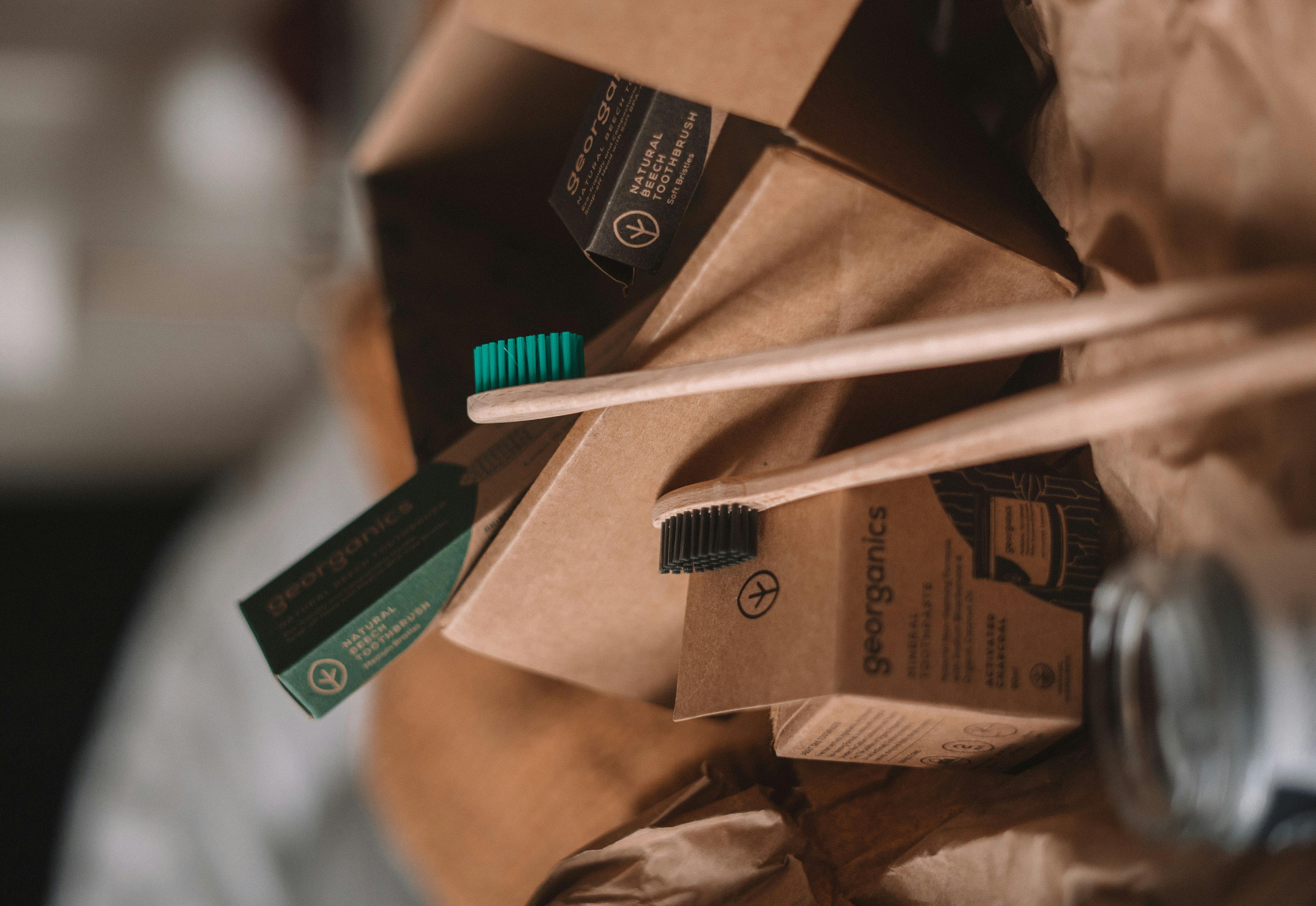
In 2024, it feels dystopian to acknowledge food as a luxury. However, this isn’t anything new. With inflation and the rising cost of living shifting our collective spending habits, a stacked trolley of kitchen staples and the odd treat is what opulence looks like these days.
Author of Feast for the Eyes: The Story of Food in Photography, Susan Bright writes of the deeper cultural context of food consumption, ‘Ultimately, food is not only about literal taste, but also Taste with a capital T—both the lifestyles we aspire to and the building blocks of culture itself.’
So, let’s explore how food is shaping culture today, and take a deep dive into some of the recurring themes and food trends of 2024.
Budget-friendly cooking & the discount supermarket boom
In the UK alone, households across the country have experienced a significant drop in living standards. According to Statista, since late January 2024, over half of UK households reported that their cost of living had increased compared with a year earlier, down from a peak of 91% in the summer of 2022 that echoed a global trend in sky-rocketing grocery costs. It’s clear this is a persistent issue, one that can be heavily attributed to the rising costs of essentials like fuel, bills, and most of all: food.
In April 2024, the inflation rate for food prices in the UK was measured at 2.9 percent, just shy of the general UK inflation rate of 2% the following month. Down from 2.3% on the month prior, this is the lowest rate seen in almost three years. Driven largely by a minor drop in food prices, consumers are still spending roughly 25% more on their groceries than at the start of 2022.
At the end of 2023, almost 39% of surveyed UK respondents were worried about affording food. And can we blame them? With all of this being said, it’s no surprise that customers can’t beat bargain fever and the allure of a budget-friendly meal. Unsurprisingly, many folks are looking to keep expenses down to cope with ‘budget cooking’, a favoured tactic for making the most of every bite. With this, we’re seeing more households making meals out of food they already have in, and many taking greater pains to plan out their shopping lists, opting for supermarket own-brand products, and eating out less. In turn, discount supermarkets have boomed, with consumer behaviour shifting in favour of cheaper alternatives like Aldi and Lidl.
The Tiktok-ification of health & wellness, Erewhon, and the lipstick effect

With a noticeable shift in the cultural zeitgeist towards wellness and healthy eating, particularly since we’ve moved through the COVID-19 pandemic and into a recession, food has continued to hold a powerful symbolism.
We’ve gone from collectively boredom baking banana bread from the confines of our kitchens, to the Tiktok-ification and mindless scroll of ‘food hacks’ that used to be the bread and butter (pardon the pun) of Buzzfeed clickbait articles of yore. We want health and wellness solutions, and we want them yesterday. Oh, and at a reasonable price. Is that too much to ask?
Healthy indulgence
Last year, Vogue Business reported that food has remained a symbol of luxury for some price sensitive Gen Zs. In a survey from the same report, it was found that out of 166 16 to 24-year-old Teen Vogue, Glamour, and Allure readers in the US, more than half have bought what they consider to be luxury food or drink in the last year.
Perhaps younger generations have finally decided to lean into the old gag long-leveraged at millennials of being too attached to their avo toast and daily takeaway coffee to afford the milestones of success traditionally associated with adulthood. This sentiment is echoed in a 2023 Redfin-commissioned survey which found that out of a sample of over 5,000, 1 in 5 millennials and 12% of Gen Z respondents believe they will never be home owners. As a zillennial, this author knows how easy it is to shed the shame of indulgence when those markers of success feel so far out of reach. What’s a cheeky brunch or morning pastry when you’re likely to be a forever renter, anyway?
“Ultimately, food is not only about literal taste, but also Taste with a capital T—both the lifestyles we aspire to and the building blocks of culture itself.”
Just last year, The Cut published a viral piece on zoomers in the US reportedly working two jobs to afford daily Erewhon, spending upwards of $200 a week. ‘In this economy?!’, you may cry. Well, yes. And this largely comes down to a little something called the 'lipstick effect'. Coined by Estée Lauder's Leonard Lauder, it refers to the idea that sales of smaller, more affordable luxuries actually go up during times of economic or financial hardship. Afterall, must we really be devoid of even the smallest of capitalist joys when the chips are down?

Many studies show consumers, particularly in the US, are willing to pay premium prices in the name of wellness. However, many are also beginning to see through brands' regular attempts at greenwashing, too. So, for those with disposable income to spare, supporting local farmer’s markets, as well as wholefoods and sustainable stores like Erewhon are appealing options.
Plant power & gut health
On the topic of health and wellness trends, there are a few key areas and ingredients worth mentioning that continue to capture the public consciousness. The first is that according to Mintel research, nearly three in five US adults say they try to eat foods that encourage a healthy gut and microbiome. This comes with a wider trend of consumers claiming to be more proactive when it comes to investing in preventative health measures and foods. Whether for weight management, bone and joint health, healthy aging, or heart health – more and more brands are stepping up and producing products designed to address these concerns.
Plant-based eating remains, and is set to continue being very popular, both due to a growing health-consciousness among consumers, and for being more budget-friendly. Set to be valued at around $77.8 billion by 2025, the global appetite for all things plant-based is projected to more than double by 2030. As a result, we’ll continue seeing more and more plant-based options on mainstream menus, and mains based on simple yet nourishing ingredients like sweet potato, cauliflower, aubergine, and other hearty vegetables.
McKinsey's latest future of wellness research also found that zoomers and millennials are purchasing more wellness products and services than older generations across the US, China, and the UK. Ballooning into an industry valued at $23.5 billion in 2023, wellness is coming to dominate large swathes of global food culture. This interest is probably due in large part to a combination of social media, greater access to and circulation of information, heightened health awareness since COVID-19, topped with the inherent desire of many to fit in and follow the crowd.
The mushaboom

Mushrooms have been having a bit of a moment over the past few years, prevalent in everything from clothing and fashion accessories, health supplements, trendy restaurant menus and more. Having been named ‘Ingredient of the Year’ by NYT in 2022, fungi has truly become the ‘it’ girl of the vegetable world. And not just your bog-standard supermarket buttons. We’re talking wild and cultivated species. Popular gourmet varieties like Lion’s Mane and Trumpet mushrooms continue to steal the spotlight, for both their taste and purported health benefits. Lion’s Mane has become especially prized for its cognitive benefits, having recently been featured in Pepsi’s new Rockstar Focus drink alongside 200mg of caffeine for a supposed 'mental boost'.
Where has this boom come from? Like many of the food and wellness trends of the past few years, many trace this mushroom madness back to the pandemic. 2020 saw a rise in amateur foragers and a growing interest in wild food, the success of Netflix’s Fantastic Fungi documentary, and a barrage of medical psilocybin research that helped pique public interest in mushrooms. Couple that with their aesthetic appeal providing a mass of otherworldly shapes and colours to capture the imagination in a visually driven digital world, and the popularity of 2023’s The Last of Us adaptation fronting the topical tale of a fungal pandemic — this is a trend that doesn’t appear to be going away anytime soon.

With huge potential as a meat replacement, countless benefits for both physical and mental wellbeing across as many as 22,000 species, and the accessibility of grow-your-own fungi kits, expect to see a lot of shroom experimentation in 2024 and beyond.
The rise of chefluencers
Celebrity chefs and food critics have long been the target of both idolatry and judgement in foodie culture. Afterall, where would we be without the likes of oily lord Ainsley Harriott, Gordon Ramsay’s idiot sandwich, GBBO’s soggy bottoms, and Nigella’s steamy innuendos?
However, since the pandemic, we’ve seen the rise of a new kind of idol. One for the digital age: the chefluencer. Depending on what your algorithm has thrown at you, you may follow a few already. We’re talking about influencers that make cooking videos for consumption on Instagram or Tiktok. They may be working as an actual chef, but as with most popular online media, this qualifier is no longer a necessity.

A hangover from lockdown days that saw people passing time by getting experimental with cooking, chefluencers have turned the kitchen into a playground, and one that doesn’t solely place women in the main role at that. All genders have benefitted from the accessibility of this new format, with easy-to-cook recipes prized for their convenience. ‘Slow cooking’ trends have also taken off, with an emphasis on homemade ingredients, and pouring love and care into more time-consuming recipes in a crossover with cottagecore and the glamorisation of stay-at-home moms or 'Trad wives'. Think middle-class rural/suburban ladies in Sondeflor dresses and frilly aprons.
And hey, regardless of the aesthetic, as a way for new parents to make some cash while caring for their kids, what’s not to like? In any case, however it looks and whoever it’s by, we can’t seem to get enough of this type of content. Perfectly adaptable for short form video, it looks like chefluencers will have a place in our feeds for a good few years to come.
More foodie faves
This is by no means an exhaustive list. The world of food is ever-changing, and thanks to social media, it’s currently adapting at a rate unlike anything we’ve seen before. Honourable mentions include a growing demand for Asian food and ingredients —think matcha, bubble tea, mochi, bao buns, summer rolls, ramen bowls, and other street food faves— and AI being used for grocery shop planning and meal prep assistance.
It’s a wild and wacky world out there. But at least we have comfort food and drink with which to drown our sorrows and fill our bellies, eh?
👋 Are you a food retailer? Sign up to CREOATE for free, and start shopping wholesale with us today to get in on the food trends of tomorrow.
Read more:








